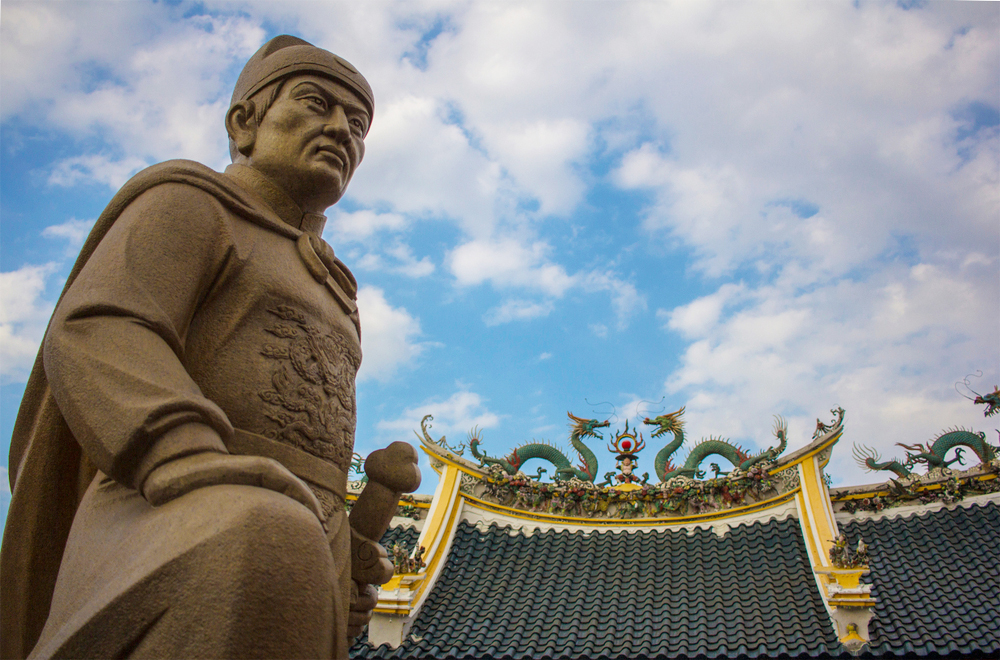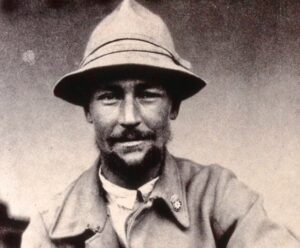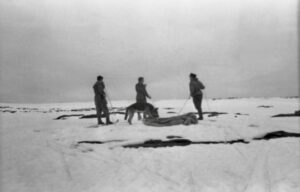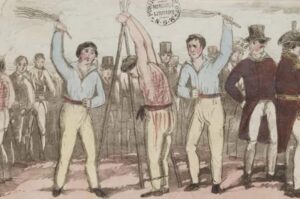Fifteenth-century China was a maritime powerhouse that explored new lands and opened trade routes. It was also the best-connected political entity in the world, with a presence in Asia, Africa, and Arabia. A man named Zheng He led the charge.
A complex, multi-talented character, Zheng He rose from slave to top naval commander, diplomat, and world explorer.
Background
Born into a Chinese Muslim family in Yunnan, Zheng He’s birth name was Ma He.
His father was descended from Persians and worked for the Mongol Empire. This became a problem, as Chinese animosity toward the Mongolians was growing. The two nations were at war by the time Ma He was a toddler.
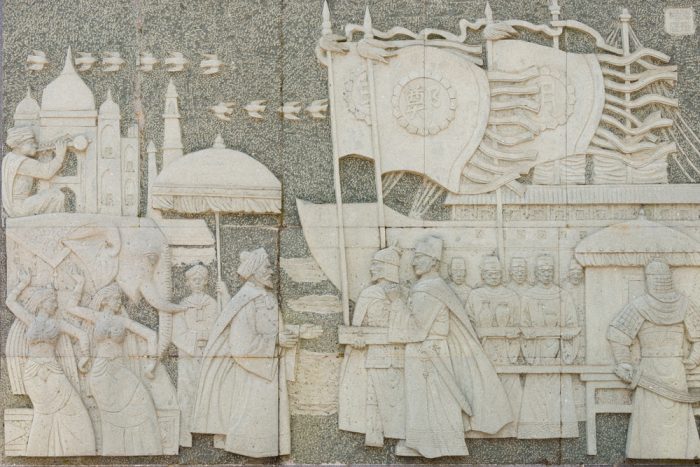
A relief of Zheng He on a voyage. Photo: Shutterstock
The rise to power
By the time Ma He was 10, his parents had died, and he was a prisoner of the Ming Dynasty’s army. As was common practice, Ma He was castrated and sent for military training.
Now a eunuch, he worked at court and became an impressive warrior. Eunuchs were valued members of Chinese society, given key positions in foreign relations, national security, the military, and in court. Chinese leaders did not view eunuchs as potential rivals and did not fear disloyalty.
As horrible as Ma He’s early life sounds, he experienced social mobility and became increasingly important in the Emperor’s court. He became a trusted confidant of Zhu Di, the Prince of Yan and future Yongle Emperor. He gained new titles and responsibilities, eventually running the Emperor’s household. Ma He became Zheng He and also the commander of Nanjing.
“Zheng He’s eclectic religious attitude and broadened cultural horizons made him a good candidate for the armada’s commander,” writes Yang Wei of the Association for Asian Studies.
Expeditions
China was already the dominant trading power in the region, but the Emperor wished to extend its influence. But China’s goal was not to conquer and colonize. Writer Geoff Wade argues that their aim was globalization.
“Zheng He did not occupy a single piece of land, establish any fortress, or seize wealth from other countries,” Wade wrote in his article, The Zheng He Voyages: A Reassessment.

A replica of a Chinese treasure ship in Nanjing. Photo: Shutterstock
Zheng He undertook seven epic voyages from 1405 to 1433. He sailed with monstrous vessels called “treasure ships.” These boats were supposedly the size of football fields, with multiple decks and hundreds of sailors. Writers Marco Polo and Ibn Battuta both mention these treasure ships, but they likely exaggerated their size for dramatic effect.
The ships carried wealth and weaponry and could transport ambassadors and dignitaries back to China. Gold, silver, porcelain, and fine silks facilitated trade and foreign relations.
Force only when necessary
Sometimes, Zheng He needed to exercise force. On one expedition, the king of Sri Lanka thought he could steal from the fleet. Zheng He sent 2,000 troops to take the Sri Lankan capital and capture the royal family. The Chinese Emperor eventually pardoned the Sri Lankan king.
Each of Zheng He’s voyages had different needs and goals. The first expedition involved 120 ships and over 27,000 men. They traveled west and met with rulers from India, Sri Lanka, Java, and Champa. His second voyage involved 249 ships as they expected conflict. War had broken out between parts of Java and Ming China.
Zheng He was a charismatic diplomat and a skilled navigator who set foot in what is now India, Vietnam, Indonesia, the Maldives, Somalia, Yemen, Zanzibar, Kenya, and Oman. He brought back exotic animals and foreign dignitaries.
On his last voyage, Zheng He died. We don’t know how and where he died, only that his remains are at the bottom of the ocean. During this final expedition, we know that he sailed to Java and India before breaking off from the main fleet to journey to Mecca.
Conclusion
Some people believe that Zheng He’s voyages were a form of “proto-colonialism.” That may be so, but facilitating this early form of globalization proved highly beneficial to China. It also benefitted Zheng He, who overcame a traumatic childhood to become one of the most influential characters in Chinese history.
Interestingly, there are still echoes of these ancient voyages in places like Kenya. On Lamu Island and Pate Island, a handful of individuals claim descent from Zheng He’s sailors. According to local stories, one of Zheng He’s ships wrecked on Lamu Island.
A few hundred Chinese sailors assimilated into the local population, converting to Islam and having children with Kenyan women. DNA analysis and archaeological excavations, which revealed fragments of Chinese porcelain from Zheng He’s treasure ships, confirm these stories.
